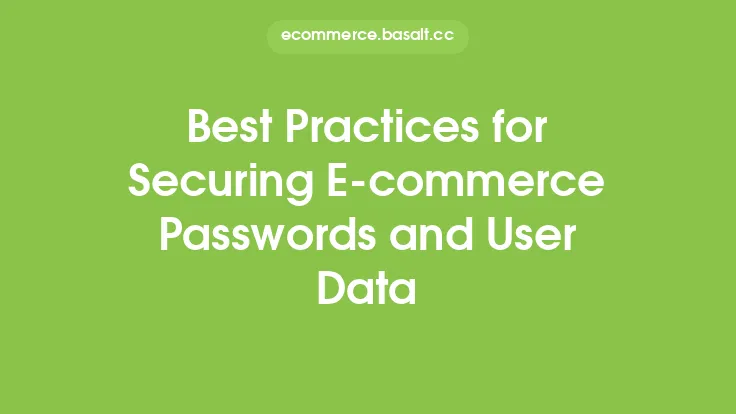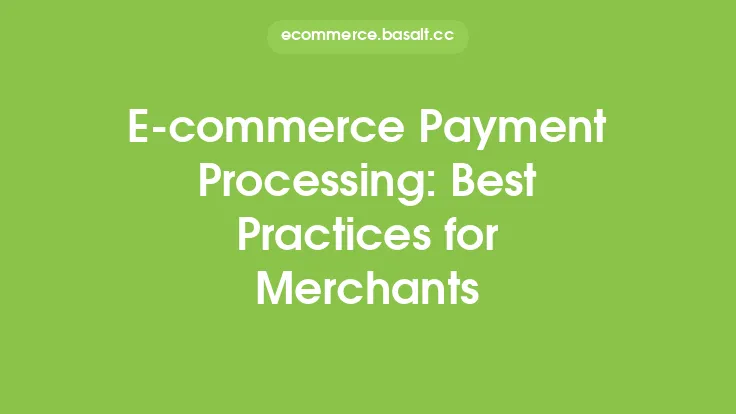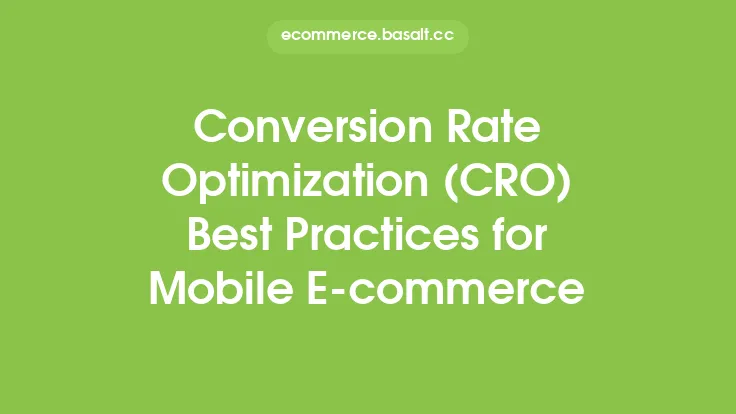Implementing recurring payments in e-commerce can be a game-changer for businesses that offer subscription-based services or products. Recurring payments allow customers to make automatic, repeated payments for goods or services, providing a convenient and hassle-free experience. However, setting up recurring payments requires careful consideration and planning to ensure a seamless and secure experience for both the business and the customer.
Key Considerations for Recurring Payments
When implementing recurring payments, there are several key considerations to keep in mind. First and foremost, it's essential to choose a payment gateway that supports recurring payments and has experience handling subscription-based transactions. The payment gateway should also provide a secure and reliable platform for processing payments, with features such as tokenization, encryption, and compliance with industry standards like PCI-DSS.
Another critical consideration is the type of recurring payment model to use. There are several options, including fixed recurring payments, variable recurring payments, and usage-based recurring payments. Fixed recurring payments involve charging customers a fixed amount at regular intervals, while variable recurring payments involve charging customers a different amount each period. Usage-based recurring payments involve charging customers based on their actual usage of a product or service.
Setting Up Recurring Payments
Setting up recurring payments requires several steps. First, the business must integrate the payment gateway with their e-commerce platform, which may involve installing plugins, APIs, or other software. The business must also configure the recurring payment settings, including the payment frequency, amount, and duration. Additionally, the business must establish a system for managing recurring payments, including handling customer cancellations, updates, and declines.
It's also essential to provide customers with clear and transparent information about the recurring payment terms, including the payment amount, frequency, and duration. This information should be prominently displayed on the website, and customers should be required to agree to the terms before signing up for the recurring payment plan.
Managing Recurring Payments
Managing recurring payments requires ongoing attention and maintenance. The business must regularly review and update the recurring payment settings to ensure that they remain accurate and compliant with industry standards. The business must also monitor customer accounts for declines, cancellations, and updates, and take prompt action to resolve any issues that arise.
Additionally, the business must provide customers with easy access to their recurring payment information, including the ability to view and update their payment methods, payment schedules, and payment history. This can be achieved through a customer portal or dashboard, where customers can log in and manage their recurring payments.
Security and Compliance
Security and compliance are critical considerations when implementing recurring payments. The business must ensure that the payment gateway and e-commerce platform are compliant with industry standards, including PCI-DSS, GDPR, and other relevant regulations. The business must also implement robust security measures, including encryption, tokenization, and access controls, to protect customer payment information.
Furthermore, the business must regularly review and update its security protocols to ensure that they remain effective and compliant with industry standards. This may involve conducting regular security audits, penetration testing, and vulnerability assessments to identify and address any potential security risks.
Best Practices for Recurring Payments
To ensure a successful recurring payment implementation, businesses should follow several best practices. First, the business should clearly communicate the recurring payment terms to customers, including the payment amount, frequency, and duration. The business should also provide customers with easy access to their recurring payment information, including the ability to view and update their payment methods, payment schedules, and payment history.
Additionally, the business should regularly review and update the recurring payment settings to ensure that they remain accurate and compliant with industry standards. The business should also implement robust security measures, including encryption, tokenization, and access controls, to protect customer payment information.
Common Challenges and Solutions
Implementing recurring payments can be challenging, and businesses may encounter several common issues. One common challenge is declined payments, which can occur due to expired credit cards, insufficient funds, or other issues. To address this challenge, businesses can implement a dunning management system, which can automatically retry declined payments and send notifications to customers.
Another common challenge is customer cancellations, which can occur due to dissatisfaction with the product or service, or other issues. To address this challenge, businesses can implement a cancellation management system, which can automatically process cancellations and send notifications to customers.
Conclusion
Implementing recurring payments in e-commerce can be a complex and challenging process, but with careful planning and attention to detail, businesses can provide a seamless and secure experience for their customers. By following best practices, such as clearly communicating recurring payment terms, providing easy access to recurring payment information, and implementing robust security measures, businesses can ensure a successful recurring payment implementation. Additionally, by regularly reviewing and updating recurring payment settings, and addressing common challenges and issues, businesses can optimize their recurring payment processes and improve customer satisfaction.





